Part 1, Is Russia’s cause justified? The historical run-up
Part 2, A just cause in the face of violence and a Neo-Nazi resurgence
Part 3, A just cause in the face of violence, deceit, and a policy of regime change
Part 4, Some history and background on bioresearch
Part 5, Ukrainian biolabs and US attitude towards bioresearch
Part 6, Use of chemical weapons in Ukraine confirmed
Part 7, Russia is NOT the aggressor…
Part 8, …but the US, NATO and EU are!
Part 9, America’s nuclear gambles.
Part 10, Are we the baddies?
I ended part 8 with a reference to the nuclear capability of the Aegis Onshore weapon system, the MK-41. It should be clear, from all my previous articles in this series, how that by itself is in direct violation of US and NATO promises that no nuclear armaments would be placed in East Germany or further East. Now we have nuclear capable launchers in Romania and Poland, as well as upgraded airfields that would allow bombers to take off much closer to their targets in Russia, or to accept troop deliveries into fully built up and prepared bases.
This is a very serious issue.
Would the US accept Russia or China to build a missile defense system in Canada or Mexico? Or even anywhere in the Caribbean? Ostensibly aimed at neutralizing outgoing American missiles? Not even on that level! Add the next level: would the US accept that such missile system was based on a nuclear capable weapons system? The US would go to war over that. Not just against Russia or China, for attempting to place such a direct nuclear threat that close to the American heartland, but also against the countries that allowed Russia and China to place such nuclear weapons on their territory! There is no doubt about that!
Yet somehow Russia is expected to just sit down and let the US do exactly that?
When I heard the news about the placement of those missile defense systems in Europe 10 years ago, I didn’t think much about it. Who could be against such defense systems? Especially with the added threat of missiles coming in from Iran towards Europe? And with the constant threat of a Soviet invasion I grew up with? Can’t trust them, so best to be prepared. Those systems are against incoming ballistic missiles, anyway, so clearly nothing offensive or threatening! Right?
I believed what I was told. I accepted it within the framework of the narrative about Russia and Iran that was painted, even when I was a child growing up in Europe, and even more so since I moved to the US.
Only when I saw the treatment Trump received, from all sides, and regardless of what he said or did, that I started to look closer. The whole “Russia, Russia, Russia” attack against him, leading to impeachment, tied in seamlessly with previous stories about how Russia was still dangerous. But it started to fall apart, quickly. Today, we have proof that it was a hoax, with a Steele dossier paid for by late senator John McCain, but handed to the Clinton Campaign, used to spy against a presidential campaign and then against a sitting President and administration! We know about the Hunter Biden laptop. We know how the media and the government colluded to squash such stories. We have the Twitter files (with more promised to come). And so much more!
Covid happened, and with that, so many inconsistencies were introduced about which no one was allowed to talk. “The Science says!”, was used to clobber any opposition. You had undergrad employees at fact-checking websites ‘correct’ top virologists, who were subsequently banned by other undergrad employees at different social media sites, based on those fact-checkers who had labed them ‘fake news’ and ‘disinformation’. Dangerous fellas, those top virologists and doctors! What do they knnow about viruses? Nothing made sense, but it laid bare an ongoing War for Our Minds. Exploring that has been the project that brought me to SubStack, to explore and write about how this all worked, and to offer ways to counter it. At the same time, the Special Military Operation in Ukraine started… Suddenly, the Nazi’s within that country, against whom even Congress had warned and voted on resolutions against, were either non-existent Russian propaganda, or actually ‘the good guys’.
Nothing made sense anymore, and it was clear that the media was completely bankrupt. This time, I decided to dig deeper, and really try to understand what was going on. That I would look at different sides, and not just accept what I was being told by the media. And what a different world opened up… I am still struggling to reconcile some of my old ideas with this new reality I am discovering. Some of it is good, and makes me glad I have a better grasp of, while other elements are much harder to accept, as they counter long-held core beliefs. “We are the good guys” chief among them…
When I came across an article by the Center for International Security and Cooperation, a Stanford based think tank/hub of research into issues pertaining to, you guessed it, international security and cooperation, it was so clearly propaganda I couldn’t believe it came from such an high-level source.
It sought to dispel any ‘rumor’ or thought that perhaps NATO was to blame for the war in Ukraine, and if not fully, than at least bore some of the responsibility. No, it was all Russia! In that article, several other examples of Russian false narratives to justify that war were given: “along with false claims of neo-Nazis in Kyiv, genocide in Donbas and a Ukrainian pursuit of nuclear arms”. For the full story, check the first article from this series on ‘Russia’s War in Ukraine’.
What is of note, is the part on Ukraine’s pursuit of nuclear arms. Here is the relevant part:
And Ukrainian pursuit of nuclear arms? On February 19 Zelensky started talking about Ukraine's withdrawal from the Budapest Memorandum and suggested the possibility of acquiring its nuclear weapons (see this article, and Zelensky’s full speech here). This was BEFORE the Russians invaded!
On February 25 Jean-Yves Le Drian (French Foreign Minister) said, as reported by Reuters: "Vladimir Putin must understand that the Atlantic Alliance is a nuclear alliance." At this point, one day after the start of the Russian invasion, there was no direct threat to NATO. But there have been many talks about making Ukraine part of NATO. What was the suggestion here?
Jaroslaw Kaczynski, the Deputy Prime Minister of Poland, added his voice on April 3, as reported by The Times: "If the Americans asked us to place nuclear weapons in Poland, we would be open to it. It would significantly strengthen Moscow's deterrence".
On April 16, 2021 (again, a full year BEFORE the invasion started), Andriy Melnyk, Ukraine’s ambassador to Germany, warned in an interview with a German radio station that “Kyiv may be forced to acquire nuclear weapons to safeguard the country’s security if NATO does not accede to its membership demand amid spiraling tensions with neighbouring Russia.”
This goes back much further, and already in 2014, Rizanenko, a member of the Udar Party, said to USA TODAY “Ukraine may have to arm itself with nuclear weapons if the United States and other world powers refuse to enforce a security pact that obligates them to reverse the Moscow-backed takeover of Crimea.” And he added that this pact was "to assure Ukraine's territorial integrity". (Funny thing: When Ted Cruz said that Ukraine gave up their nukes in the 1990s because the US had said it would ensure Ukraine’s territorial integrity from Russia, PolitiFact rated that ‘False’…)
Now, are those credible indicators of a real and achievable plan to obtain nukes? Isn’t this just blackmail, grandstanding, by a desperate Ukrainian government (as Cato Institute surmised in their article)? It most likely is, but even as such, Ukraine DID bring up the nuclear pursuit, and as such, it is not a false claim, even if the truth and reality is that even if Kiev did decide to build or acquire nukes, it more than likely would fail well before they could get started.
I wrote that such attempts would fail, because if Ukraine attempted such nuclear research, Russia would simply not allow it: look at Israel’s air attack on a Syrian nuclear reactor in 2007, or even earlier, on an Iraqi reactor in 1981. Look at the sanctions on North-Korea and Iran, in attempts to prevent or limit their ability to make nuclear weapons.
Such rhetoric is not without consequence, as it places this nuclear threat on the radar for Russia. When Poland enters the fray, and asks for nukes to be placed on their territory (technically, their Deputy Prime Minister, Jaroslaw Kaczynski, simply signaled ‘being open to that’, for plausible deniability), Russia will take note. Especially since Poland already has the launch facilities and capabilities through the Aegis Onshore installations.
When NATO exercises have strategic bombers (read: those that have the capability to carry and fire nuclear tipped missiles) fly straight toward Russian territory, now as close as the Baltic States Poland AND Ukraine (even if not yet officially member of NATO, joint exercises were already being held on Ukrainian territory!), with special electronic warfare planes nearby, NATO (and thus, the US), can now probe Russian defenses deep into their own territory, in much higher detail as when the NATO planes could not come that close to Russian territory. It suddenly places the possible start of US led hostilities literally at the heart of Russia. Of course, Russia would take note.
Very important to note, is the Nuclear Doctrine of the United States (and that of Russia).
I will leave the Cold War era doctrines out of scope.
Let’s start with the Bush Senior presidency, which saw the collapse of the Soviet Union, as many believed the result of the efforts and leadership of his fellow Republican predecessor, Ronald Reagan. Having to deal with this radically new reality, his undersecretary for Defense, Paul Wolfowitz, wrote the "Defense Planning Guidance of 1992", better known as the ‘Wolfowitz Doctrine’. The goal was to "set the nation's direction for the next century."
Military Strategist Andrew Bacevich, in “A letter to Wolfowitz”, wrote “I refer here to the famous (or infamous) Defense Planning Guidance of 1992, drafted in the aftermath of Operation Desert Storm by the Pentagon policy shop you then directed. Before this classified document was fully vetted by the White House, it was leaked to the New York Times, which made it front-page news. The draft DPG announced that it had become the “first objective” of U.S. policy “to prevent the re-emergence of a new rival.” With an eye toward “deterring potential competitors from even aspiring to a larger regional or global role,” the United States would maintain unquestioned military superiority and, if necessary, employ force unilaterally. As window dressing, allies might be nice, but the United States no longer considered them necessary.”
(Notice the cynical statement on allies, in this calculation as a ‘superior’ and dominating force, and look back at the unilateral actions undertaken by the US in the last year or two regarding their allies, including, not in the least, the destruction of the NordStream pipeline!)
All this, Bacevich pointed out, was based on 5 points made by nuclear strategist Albert Wohlstetter. This is not unimportant, and shows a long history of this line of thinking. In the mid-1950s, Wohlstetter and his team at the think tank RAND Corporation issued a study that showed that the air bases of the Strategic Air Command could be vulnerable to a surprise attack, after which retaliation would be impossible. Where the MAD principle of Mutually Assured Destruction perhaps naively assumed strikes on civilian centers, and a focus on the ability to survive an attack and strike back effectively (named ‘second strike’), he uncovered the ability of ‘first strike’, to target the military and strategic assets and bases of another nuclear power first, thereby denying them enough surviving weapons, delivery systems and troops to mount an effective counter-attack.
As I mentioned in the previous paragraph, Bacevich summarized the perspective of Wohlstetter, Wolfowitz’ mentor, into 5 points, which included the following (as relevant to this exploration, emphasis mine):
“Third, the key to averting or at least minimizing surprise is to act preventively. If shrewdly conceived and skillfully executed, action holds some possibility of safety, whereas inaction reduces that possibility to near zero. Eliminate the threat before it materializes. In statecraft, that defines the standard of excellence.
Fourth, the ultimate in preventive action is dominion. The best insurance against unpleasant surprises is to achieve unquestioned supremacy.
Fifth, by transforming the very nature of war, information technology — an arena in which the United States has historically enjoyed a clear edge — brings outright supremacy within reach.”
This draft proposal of this doctrine, however, was not intended for public release. After the leak to the NYTimes "by an official who believed this post-cold war strategy debate should be carried out in the public domain", public outcry condemned that doctrine as imperialist, based on unilateralism and pre-emptive military action, in turn hinging on embracing and enhancing the US status as sole superpower, with total military supremacy.
The draft included lines such as these:
“Our first objective is to prevent the re-emergence of a new rival, either on the territory of the former Soviet Union or elsewhere, that poses a threat on the order of that posed formerly by the Soviet Union.”
“Nevertheless, the sense that the world order is ultimately backed by the U.S. will be an important stabilizing factor.”
“We continue to recognize that collectively the conventional forces of the states formerly comprising the Soviet Union retain the most military potential in all of Eurasia; and we do not dismiss the risks to stability in Europe from a nationalist backlash in Russia or efforts to reincorporate into Russia the newly independent republics of Ukraine, Belarus, and possibly others... We must, however, be mindful that democratic change in Russia is not irreversible, and that despite its current travails, Russia will remain the strongest military power in Eurasia and the only power in the world with the capability of destroying the United States.”
Etc.
This draft was then hastily rewritten by then U.S. Secretary of Defense Dick Cheney and Chairman of the Joint Chiefs of Staff Colin Powell, for an official release in April 1992, that significantly softened that document.
Likely as part of the backlash, the Nuclear Posture Review of 1994, initiated by the Clinton Administration, was co-chaired by Ashton Carter, the Assistant Secretary of Defense for Nuclear Security and Counterproliferation. Carter proposed a very drastic reduction, and to eliminate the traditional ‘triad’ of bombers, ICBMs and submarines into a sole focus on submarine fired nuclear missiles. In the middle of the review, he stated in an interview with the LATimes: "Our intention is to have a military that doesn't need to use [nuclear, biological, and chemical] weapons. We can use conventional forces to prevail anywhere in the world." This was met with very fierce resistance within the military, aided by supporters in Congress and Senate, and the final result preserved a strong stance and reaffirmation of the use of the full triad.
The next NPR came in 2002, under Bush. In the aftermath of 9-11, we see a clearly presented shift, as seen in this slide from a DoD press briefing on Jan. 9, 2002 to present the Nuclear Posture Review.
We see a very important shift, from the offensive threat assurance to deter, to a multi-layered approach that now also includes defenses, missile defense, etc. to create a new ‘triad. Where Carter under Clinton wanted a single arm of the former triad to remain (nuclear missiles shot from submarines), this new Bush era NPR wants to expand the triad into a new triad, that focuses not on offensive capability, but also defensive, intelligence, command & control, and infrastructure, as well as conventional strike capabilities, to augment the response arsenal of the United States. Below are two more of the slides from that presentation, that illustrate this new direction.
There are some more gems in the Q&A section that followed, but this will suffice for our current overview.
Despite this NPR, a DoD document was leaked in 2005, the Doctrine for Joint Nuclear Operations, that stipulated the circumstances under which US Forces could request the use of nuclear weapons. The context: this was devised to align US nuclear policy with the Bush Doctrine, which centered around 3 main principles: unilateralism, preemptive war, and regime change. (Do you notice how Wolfowitz’ position is coming back? This is not a coincidence, as he was appointed deputy Secretary of Defense, under Rumsfeld, and continued his work!)
The Washington Post wrote about this leaked document on Sept 11, 2005 (likely not a coincidence, to help ‘sell’ this new revision):
“The Pentagon has drafted a revised doctrine for the use of nuclear weapons that envisions commanders requesting presidential approval to use them to preempt an attack by a nation or a terrorist group using weapons of mass destruction. The draft also includes the option of using nuclear arms to destroy known enemy stockpiles of nuclear, biological or chemical weapons.”
“To deter the use of weapons of mass destruction against the United States, the Pentagon paper says preparations must be made to use nuclear weapons and show determination to use them "if necessary to prevent or retaliate against WMD use."
“The draft says that to deter a potential adversary from using such weapons, that adversary's leadership must "believe the United States has both the ability and will to pre-empt or retaliate promptly with responses that are credible and effective." The draft also notes that U.S. policy in the past has “repeatedly rejected calls for adoption of 'no first use' policy of nuclear weapons since this policy could undermine deterrence.””
This document is a follow-up to the 2002 NPR, and broadens the potential criteria to use nuclear weapons.
In 2010, the Obama Administration held their own NPR, and despite his pre-election calls and promises outlining a world without nuclear weapons, his NPR only limited the development of any new nuclear weapons, as the Bush NPR and leaked Doctrine wanted. Yet it called for a $5 billion investment to rebuild aging nuclear infrastructure (read: update and modernize).
His mastery of oratory skill is a fact of history, and shown here again. While holding out the lofty goal of a nuclear weapon free world, he claims the US would maintain a ‘safe, effective and secure arsenal’ of nukes, as long as nuclear weapons exist. This is defensible as a common sense posture. But his next trick is incredible: while making a big deal of ‘reducing the role of US nuclear weapons in US national security strategy’, Obama effectively ushered in a continuation of what Bush had started: relegate the traditional nuclear triad to a single leg of a new triad, and focus on new defensive and conventional offensive capabilities! All the while appearing as a dove, who is breaking with the ‘warmongering past of Bush’. You have to give it to him and his team: a very effective misdirection.
Remember, in this light, the deceptive negotiations by Obama during the renegotiation of START, as outlined in my previous article! It separated missile defense from those negotiations, in order to block any objection, while the US was actively upgrading the capabilities of their existing anti-missile weapons to include anti-ICBM capabilities, and while installing launch systems on Polish and Romanian soil that were able to fire the nuclear capable Tomahawk missiles…
A few years later, under Trump, a new NPR was held in 2018, and this now included a call to close the gap in terms of low yield nuclear weapons: this would allow the US to counter smaller scale ‘regional’ use of nuclear weapons with similar, smaller scale low yield weapons of their own, to once again raise the threshold for all-out nuclear war, by adding options in between conventional and full nuclear war.
In 2022 the Biden administration presented their own NPR, which identified ‘mutual, verifiable nuclear arms control as the most “effective, durable and responsible path” to reduce the role of nuclear weapons in U.S. strategy and prevent nuclear use.’ Yet the Biden admin played games with erecting hurdles that made Russian inspection on US soil in light of the New Start treaty impossible, while demanding that Russia allowed US inspectors in critical strategic bases, during an active war where Ukraine, guided by US intelligence, had already targeted Russian strategic bases deep into Russia. It again maintained the US policy to reject adopting a ‘No first use’ or ‘Sole Purpose’ policy, and that ‘the United States would consider using nuclear weapons only in “extreme circumstances” to defend the vital interests of the United States or its allies and partners.’
The 2022 NPR also kept the Trump requirement to develop a low-yield submarine launched missile.
On top of that, the US maintains an ambiguous declaratory policy regarding the potential use of nuclear weapons. As Matthew Costlow explained: “The current U.S. policy of “calculated ambiguity” states that America will only consider nuclear employment under “extreme circumstances” when its “vital interests,” or those of its allies and partners, are threatened. This leaves it to America’s adversaries to wrestle with whether the United States would consider their actions “extreme” or threatening “vital interests.””
This is very clearly and literally stated in official US military documents, such as in the 2018 Nuclear Posture Review:
“The United States would only consider the employment of nuclear weapons in extreme circumstances to defend the vital interests of the United States, its allies, and partners. Extreme circumstances could include significant non-nuclear strategic attacks. Significant non-nuclear strategic attacks include, but are not limited to, attacks on the U.S., allied, or partner civilian population or infrastructure, and attacks on U.S. or allied nuclear forces, their command and control, or warning and attack assessment capabilities.
The United States will not use or threaten to use nuclear weapons against non-nuclear weapons states that are party to the NPT and in compliance with their nuclear non-proliferation obligations.
Given the potential of significant non-nuclear strategic attacks, the United States reserves the right to make any adjustment in the assurance that may be warranted by the evolution and proliferation of non-nuclear strategic attack technologies and U.S. capabilities to counter that threat.”
This ambiguity shields the US from the accusation of planning a first strike. They might, or might not. That is part of their game of deterrence. Yet we see, at the same time, how the US is strongly investing in defense capacity, including -very importantly- missile defense, as well as adding low yield weapons. This allows an option for first strike, where the US hits enemy strategic targets in a first, pre-emptive attack (which could be conventional, nuclear, or a mix). Whatever enemy nuclear capacity remains, this plan counts on it being degraded enough so that the missile defense systems will then be able to effectively halt any such counter-attack. This would completely render the MAD principle moot. “We can destroy you, and you can’t do anything meaningful in return!”
This is a view that others share. Cynthia Roberts is one of them, writing for War on the Rocks, a group focused on analysis and debate on strategy, defense, and foreign affairs. She pointed out in her 2020 article that the Kremlin had published on June 2 of that same year a document with the title “Principles of State Policy of the Russian Federation in the Sphere of Nuclear Deterrence”.
In it, Russia’s official position on their nuclear deterrence policy was explained, and identified the range of threats that Russia wants to deter with their nuclear forces, clarify their approach to deterrence, and explain the conditions under which Russia might resort to using nuclear weapons.
Roberts writes: “Analysts should read Principles of State Policy extremely carefully and with a Russian lens. Importantly, Russia experts should appreciate that Moscow is animated by a persistent fear that Washington seeks to neutralize Russia’s strategic deterrent. As a result, the military is fixated on preemption to prevent a disabling first strike, even as the political leadership has traditionally resisted pre-delegating nuclear authority. The document also shows that Russian nuclear doctrine has focused more on ensuring deterrence and less on nuclear coercion for aggressive aims.”
The latest version of the official Russian position on the use of nuclear weapons, published in 2014, states:
“The Russian Federation reserves the right to use nuclear weapons in response to the use of nuclear and other types of weapons of mass destruction against it and/or its allies, as well as in the event of aggression against the Russian Federation with the use of conventional weapons when the very existence of the state is threatened.”
That is a much more limited doctrine, that is indeed focused on defensive deterrence, and only in direct response to an attack. It avoids using the vague and very flexible ‘vital interests’ or ‘national security interests’ that could cover just about anything, but instead the much more direct ‘when the very existence of the state is threatened’.
Yet Roberts also points out that changes are being made. In the 2017 naval doctrine, it is held that “demonstrating the willingness and determination to employ force, including non-strategic nuclear weapons” strengthens deterrence in conditions of an escalating military conflict.”
But just as the increase in nuclear weapon development since early 2000 can easily be seen as a sign of Russian aggression, we need to keep in mind what started that development: the US unilaterally ending the ABM treaty. We reap what we sow…
One can play the ‘what was first, the chicken or the egg’ game indefinitely, but there is a clear pattern of US provocation, and openly (!!) stated aims of degrading Russian power, preventing them from rising to any level of power again, to dismantle the current Russia into even smaller portions (i.e., to ‘decolonialize Russia’), and to impose US dominion over Russia (with several instances of deception to reach such goals, as chronicled in this series).
Of course Russia is responding accordingly, to safeguard their own future and existence. What strikes me, is the lengths to which Russia goes to put the brakes on any action on their side that might be seen as escalation. Without whitewashing Russia or Putin in everything else, when looking at the current Special Military Operation in Ukraine, I cannot escape the conclusion that the US has acted as the aggressor, and Russia is responding with extreme patience and restraint, step by step escalating in face of ever increasing provocations and threats.
Meanwhile, the US keeps pushing, provoking, as the very existence of those elites in the US and NATO is threathened by the impending defeat in Ukraine. They carelessly and in a panic push even towards nuclear war!
Take that story on the downed US Reaper drone, for example.
The US sent a highly sophisticated intelligence gathering drone right next to an active war zone, with many vital Russian bases and military assets. Keep in mind, this is after the US has given tons of intelligence and active guidance to Ukrainian forces about where and when to strike, including strategic bases deep inside Russia (which is no coincidence: why only strategic bases that aren’t really involved in the war, anyway, and not other ‘random’ military, production or logistic targets that would have a much more direct benefit?). Don’t forget the open talk by Western countries about targeting Crimea, either! US intelligence has cost many Russian soldiers their lives, and millions in Russian military hardware.
To prove that point, on March 17 just a few days later, a different Reaper flew over the Black Sea, but this time accompanied by a RQ-4B drone over Romania and the southern part of the Black Sea, an electronic intelligence aircrafts RC-135W and EP-3E, a French long-range radar control aircraft (DRLO) E-3F, a Turkish AWACS aircraft E-7T, and a NATO RQ-4D drone over the central part of the Black Sea.
Sending that Reaper to Crimea was an act of war. So would shooting down that drone, be. Yet Russia restrained themselves, and did not shoot. It used 19 fly-bys at very close range, and the drone operator and his/her superiors did not get the hint to back off, that they were not wanted. Then those Russian planes dropped fuel on the drone, and the resistance of that fuel bent some of the propeller blades, causing it to lose control and crash.
Every time in the past year such array of spy aircraft amassed over the Black Sea, an attack with Ukrainian kamikaze drones on Crimea, Krasnodar and Rostov would follow. Missions with just a few spy drones, such as on the day that Reaper got shot down, prepare those larger forrays. Western countries, including the US, have also delivered naval drones to Ukraine, and intelligence gathering by drones like the Reaper can easily pinpoint where Russian ships are, and designate targets to such naval attack drones.
Next, the Russians did not fire on the drone, nor did they collide with it. The video shows that the Russian Su-27 fighters kept flying OVER the drone. Looking at the drone, the large tails would prevent the Su-27 from hitting the propeller without also severely hitting the tail, and immediately disrupting it’s flight pattern. On top of that, the propeller is bent, not broken: what collision with a hard object such as that plane would bend and not break a propeller? And look closer: it is bent backwards: if this bending was caused by the plane hitting it from behind, it would be bent FORWARD, not BACKWARD! More accurately, the dumped fuel added suddenly a lot of drag and wait to the lightweight propellers, causing one to bend, disrupting the flight, causing it to crash. (Notice in that screenshot also the Crimean coastline, will get back to that in a moment.)
On top of that, Russia had closed the airspace around Crimea, following all necessary international rules, and had clearly communicated that. Even if the US does not recognize Russian de jure control over Crimea, and thus, the right to close that airspace, the Russians have the de facto authority, and the war is a reality, too. On to of that, the Reaper had its transponder turned off, signaling it did not want to be spotted that close to Russian installations.
The US released the following map, that suggests that the Russians went way outside their jurisdiction, either way, and showed clear aggression.
Yet if we look at images from the video itself, we see that the coastline of Crimea is shown:
That angle would put the drone a whole lot more North than the US released map would suggest:
While the Western media want to spin this as irresponsible and aggressive Russian behavior, totally unprovoked, against a peaceful drone peacefully minding its own business, this background should offer a different view. The US shot down Chinese weather balloons, in a craze, after the mission of that balloon (weather or spying, makes no difference) was completed. But when Russia prevents a US drone from starting its mission over sensitive wartime military installations, the US is acting surprised?
What is worse, is the way that some hawks in the US are reacting. From a report by The American Conservative:
“South Carolina Sen. Lindsey Graham appeared on Sean Hannity’s Fox News show last night and said the U.S. should shoot down Russian jets that intercept U.S. aircraft, manned or not.
“We should hold them accountable and say that, ‘If you ever get near another U.S. asset flying in international waters, your airplane will be shot down,'” Graham claimed. Graham went on to employ the tactic that every Republican uses when trying to make a bad idea sound like a good idea: invoking the name of Ronald Reagan. “What would Ronald Reagan do right now? He would start shooting Russian planes down if they were threatening our assets.” Later, addressing Biden, Graham said, “If you don’t change your game and up your game, we’re going to have World War III.”
So according to Graham, in order to avoid WWIII, we need to start it. By shooting down Russian planes just for coming near a US spy drone that is used to help identify targets for Ukrainian attacks, killing Russian citizens and soldiers. Very smart move, what statesmanship! There is no reason or insight driving such statements, only a dangerous game of escalation. Once a Russian plane actually fires a missile at a US plane or drone, American hawks and NATO will have their casus belli: stoke up anger in the United States, make a hero out of the killed pilot, and ramp up now open hostility.
With another nuclear power.
Do our leaders really want to push Russia to use nukes? Or to make any mistake that would allow them to use nukes pre-emptively? In the ultimate gamble that our offensive capacity will take out enough Russian nukes, while our defense can take down enough if not all of the surviving nukes that get fired?
I don’t want to take that gamble, as our lives will be on the line: we don’t have access to plushy doomsday bunkers.
When will American leaders stop the provocations, and this push towards war with Russia? With the ever increasing risk of nuclear exchange?





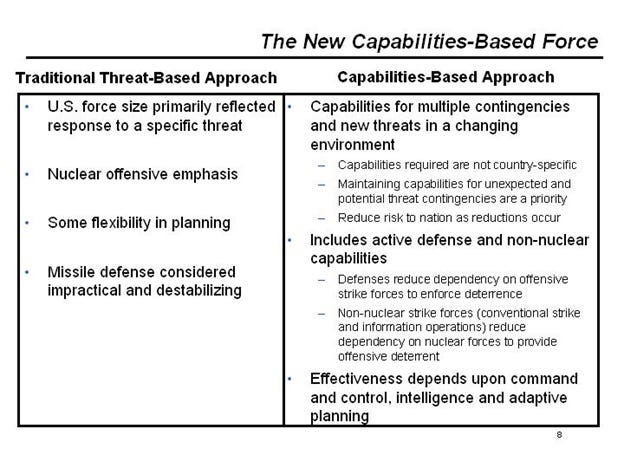
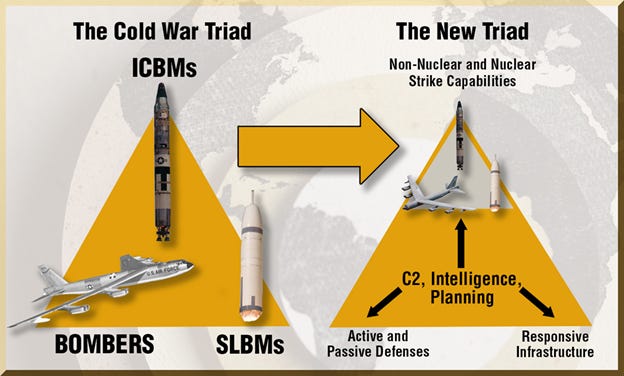
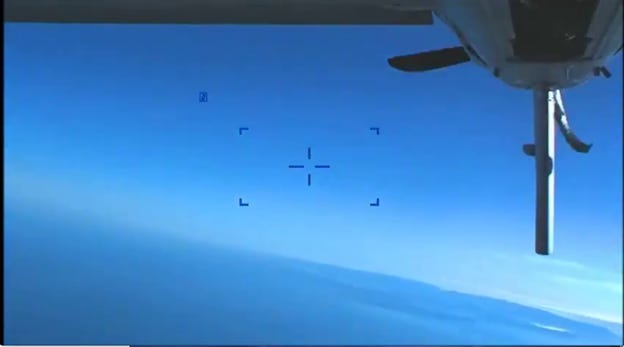
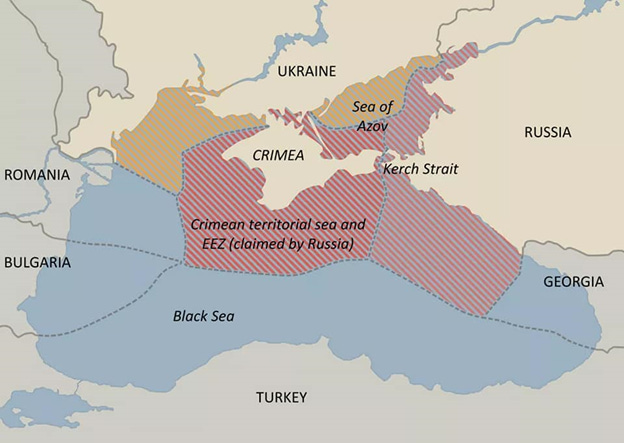
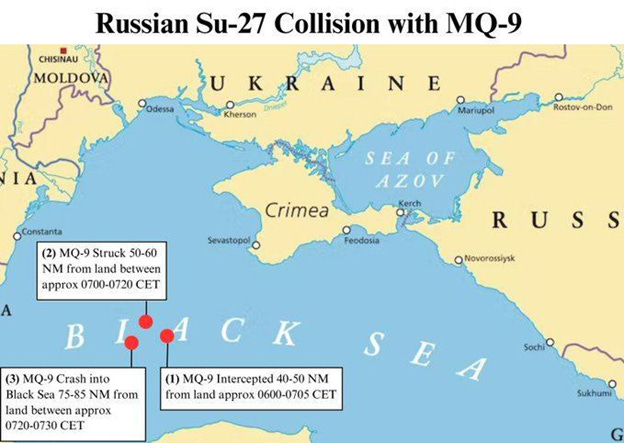


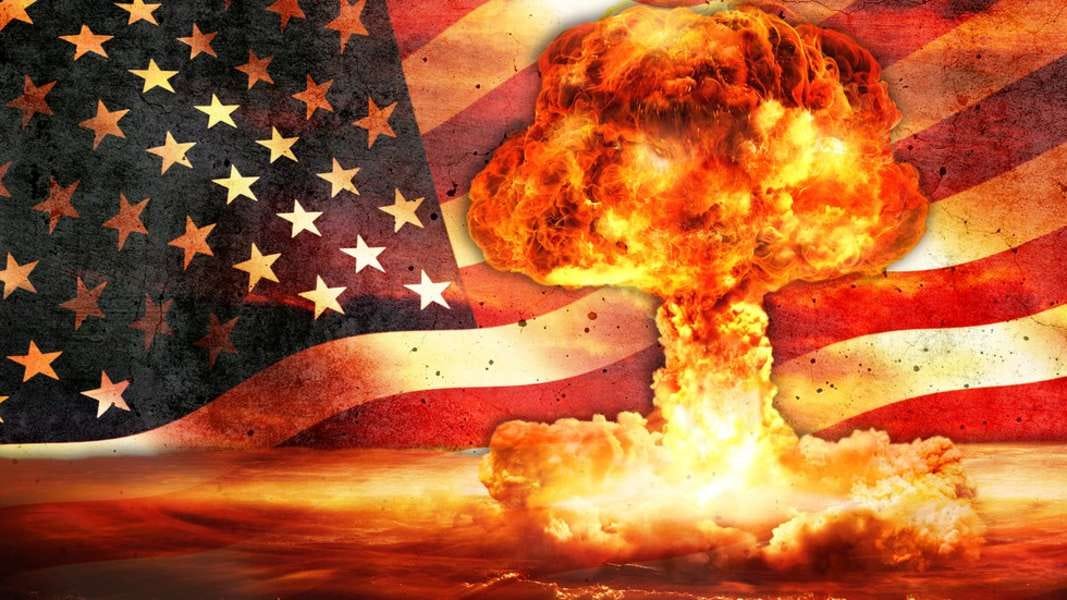
Your analyses of the present situations is very erudite and enlightening. I have a few mind-blasts reading them! Crack on!